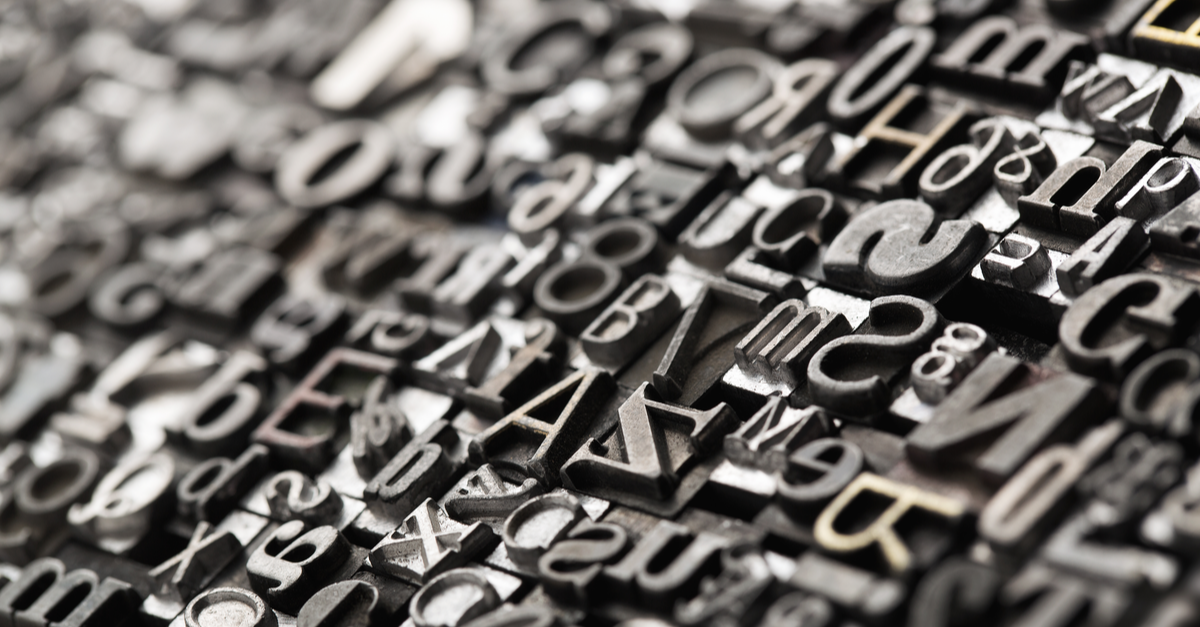[Updated for 2023]
Does this sound familiar? You’re trying to explain the vision for your company’s next print piece to a designer, but you can’t find the right words. Or worse, you’re halfway through the conversation and can’t think of a way to say you don’t know what a ‘substrate’ is.
Don’t worry, we’ve all been there. Print projects are complicated and come with a whole host of new vocabulary to learn. That’s why knowing at least the basic commercial printing terms and concepts is so important.
To give you a helping hand, we’ve put together a list of the print terms you need to pay attention to when developing a new project and discussing it with your printer. The good news is, the top printing companies will have experts on hand if you do get flustered. But here’s a list of terms you’ll want to know:
SUBSTRATE
Substrate describes the base material your design is printed on. It includes any variety of paper (be it lightweight, heavyweight, coated, uncoated, paperboard, cardboard, etc.), plastic films or foils, glass, metal, textiles, plastic containers, or parchment.
Related: Amp Up Your Signage Design with 7 Cool Large Format Ideas
LARGE FORMAT
Also called wide-format printing or grand-format printing, this concept refers to printing that requires special equipment for large-scale print dimensions. While large format sometimes varies in meaning from printer to printer, it generally refers to the following categories of print materials: window posters, wall posters, event and trade show signage, store displays, horizontal or vertical hanging banners, standing pop-up banners and promotional signage.
DIE CUT
To die cut is the process through which a thin, flat material is cut into a specific shape using a steel cutting die. The process is very popular for detailed promotional and marketing materials and, as a result, can get quite pricey.
Related: What is Die Cutting? (And why it’s insanely cool)
EMBELLISHMENT
Print embellishments are the additional elements of your printed piece that make it extra special and really catch the viewer’s attention. These can include foil stamping, varnish, gloss aqueous, UV spot treatment, embossing, soft-touch and much more.
Embossing
To press an image into paper so it is raised above the surface. Embossing is a type of embellishment. There are different types of embossers, including a special embossing machine that is used for braille printing.
COATINGS
Coatings are protective elements that are added to a finished print piece to protect it from damage or, in other cases, used to embellish it. Coatings are very important commercial printing terms, and include dull, matte, glossy, satin, grit and more. You can choose them based on the substrate used for print.
BLEEDS
Bleed refers to the printing area that extends beyond the trim (the trim is the point where the print piece is cut from the main sheet). It’s an important part of any print job, especially in situations where you want to print exactly to the edge of a sheet of paper.

CROP MARK
Crop marks (or trim marks) are the lines printed in the corner of the paper that tell the printer where to cut. Usually, printers aren’t able to print to the very edge of the paper, so it’s easier to print everything on a larger piece of paper, then trim it to the correct size.
PAPER STOCK
Paper stock, or the choice of paper, impacts both the ink and the design that went into it. The primary features of paper are weight, finish and gloss; it’s important to decide which is right for your project. Choosing the right paper stock helps to deliver an excellent print piece.
Plate
Piece of paper, metal, plastic or rubber with the image needed to be reproduced using an offset press. Plates are used to transfer images and text onto the surface you want to print on. Plates are unique to the image and text being printed on the specific run and new plates are needed if changes to the image or text are made.
Blanket
Used on an offset press, a blanket is a rubber-coated pad, mounted on a cylinder that receives the inked image from the plate and transfers it to the surface to be printed.
CMYK
Abbreviation for cyan, magenta, yellow and key (black), the four ink colors on an offset press. CMYK is a color model that works best for traditional printed materials such as flyers, brochures and signage. In the printing process, CMYK colors are printed on top of each other using different percentages of transparent inks.
THE MORE YOU KNOW!
Knowing these essential print terms and concepts is a huge asset, whether you’re the office manager or the one in charge of the entire print project. It saves a lot of time on research, and keeps you from trying different options before you get the right one.
Of course, we’re always here to help make the job, and your life, a lot easier. Get in touch with our experts — we’ll explain all the different commercial printing terms and walk you through all your choices.




